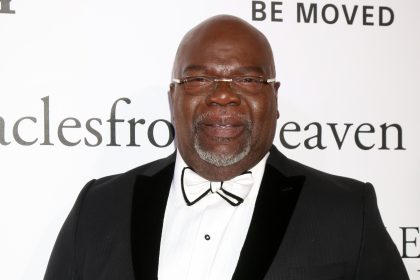 Jerome Huddleston understands that the torrential downpour of misfortune at General Motors, which preceded and led up to its bankruptcy filing, had a silver lining. The automotive leviathan took fastidious inventory of its procedures, processes and products and made modifications to its business model which has inspired its bold reemergence. The optimism and renewed spirit has spilled onto the assembly line, like here at the Hamtramck Assembly Plant, Jerome Huddleston says, as they ready the world for the Chevy Volt that is just pouring into the marketplace.
Jerome Huddleston understands that the torrential downpour of misfortune at General Motors, which preceded and led up to its bankruptcy filing, had a silver lining. The automotive leviathan took fastidious inventory of its procedures, processes and products and made modifications to its business model which has inspired its bold reemergence. The optimism and renewed spirit has spilled onto the assembly line, like here at the Hamtramck Assembly Plant, Jerome Huddleston says, as they ready the world for the Chevy Volt that is just pouring into the marketplace.
“From a technology perspective — and I think it starts with the Chevy Volt — [our technology will] put us light-years ahead of the [the competition]. With our vehicle, you’re able to drive 40 miles on a single charge of electricity,” said Huddleston, the supply chain director at Hamtramck. “If you want to continue to Florida, you can do that based on the generator that’s also tied to vehicle. There’s a small engine sued totally to recharge that generator. Just keep a little bit of gas and you can drive to Florida and back.”
But before GM could construct such state-of-the-art, genre-redefining products, they had to make alterations to the culture surrounding the brand.
“If you rewind 25 years ago and go up to 12 years ago, we used to fight like cats and dogs, all the time, over minor things. And I think it began to manifest itself in the products we were building,” he reflects. “Fast-forward, if you will, to about 12 years ago, we started getting smarter about the relationship side. And I think that we started to make better decisions with the relationships with UAW, the suppliers and we’ve grown that over the years.”
And, most importantly, GM is making cars that evoke emotional responses from consumers, something that wasn’t considered paramount a few decades ago.
“When I go back to the ’70s, and probably even more so to the ’80s, we built a lot of cars that looked alike. In the mid-car segment, we had the Cutlass Supreme, the Buick Regal, the Chevy Impala, and at the end of the day, they all basically looked the same. They might have had different taillights, different headlights. But when you stepped back and looked at the vehicles, they were about the same,” Huddleston surmised from his office.
GM, like other mammoth intercontinental conglomerates, may have taken their eyes off their counterparts who began audaciously encroaching on its coveted market share with vehicles that awed the public.
“I think in the ’70s, we had so much of a corner on the market that we didn’t pay attention to a whole lot of things. When we were cranking along at 50-60 percent of the market, we didn’t pay a whole lot of attention. I think we got a little lazy in terms of designs,” Huddleston elucidated. “In the ’90s, I think we started to wake up, more so about mid-90s. I think that’s when we started to see our first shot at changing the aesthetics of our vehicles. Continuing to move forward, we we [have products like] the Cadillac Escalade. To this day, it hasn’t been refreshed in five years, [yet] it’s still one of the best looking SUVs on the market.”
Huddleston also remarked on the ethics that powered his ascendance up through the ranks, imploring young workers to invest more time in improving job performance and maximizing their skills.
“First and foremost, is performance. If you’re not capable day in and day out of getting your job done — even with some of the unbelievable odds that may be in place — it’s going to be difficult. One of the things that I stress to people, no one is going to give you anything.” he says, adding that representing yourself well and developing key relationships and mentorships will be invaluable in attaining career aspirations.
“You can learn from people and it may not be work related; it may be life related. That becomes very important. Sometimes I see younger people come into the organization, and sometimes I think they have the perspective that they will be the CEO in two years. And it doesn’t work like that. You don’t want to be in an organization where things move too fast to where you’re not knowing what you’re doing. That’s not going to represent you too well,” he says.
–terry shropshire










